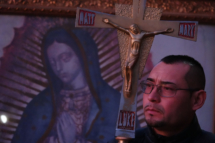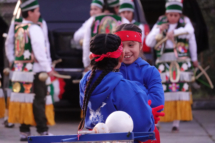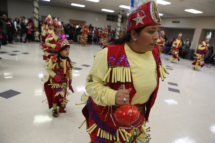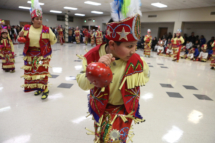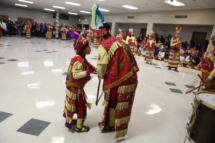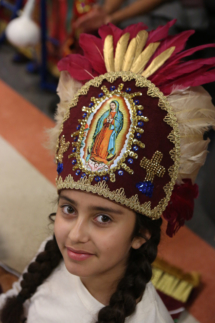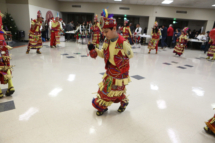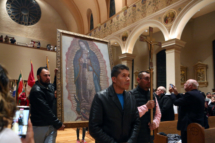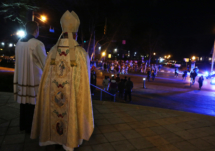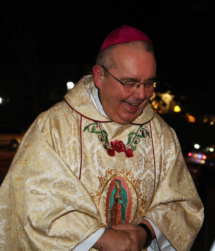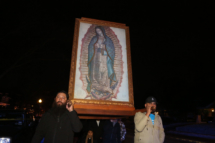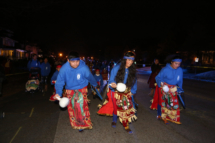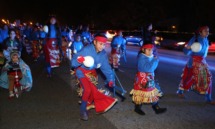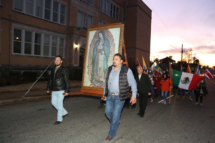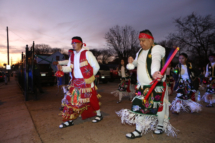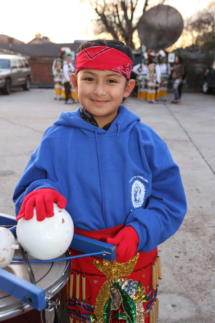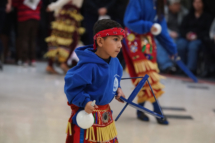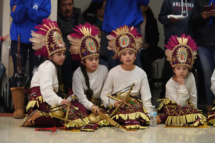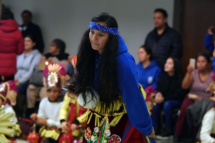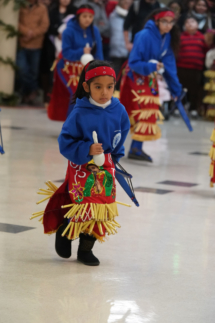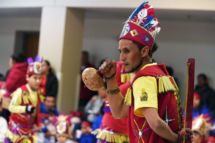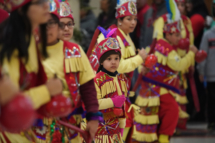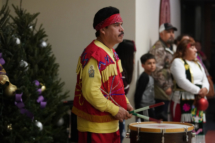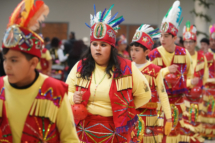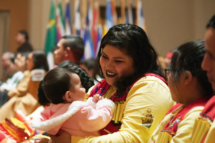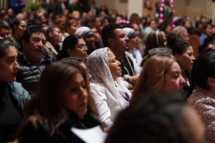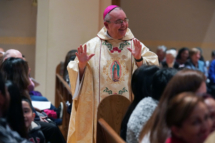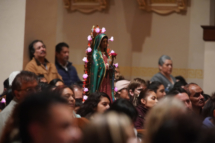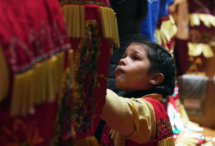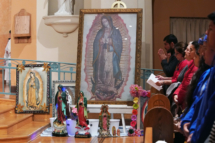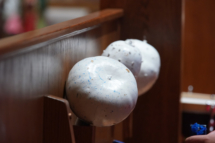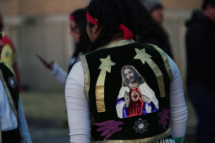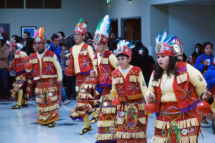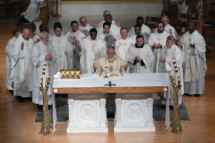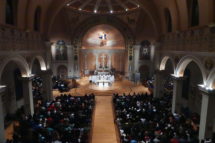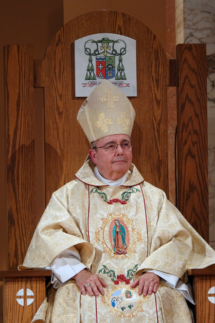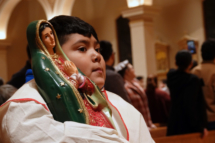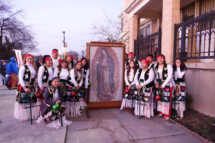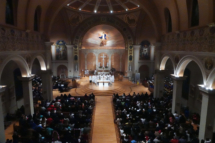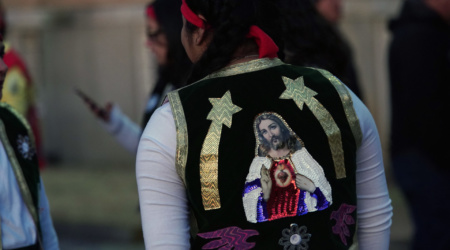How the Story of one Indigenous Man Came to Represent Hope for All Amy Hall
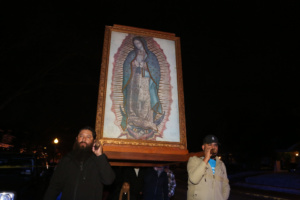
Memphis, TN – If you have been in many Catholic churches in your lifetime you have likely seen representations of Mary, the mother of Jesus, like the one above. It is also likely that you have seen that image on everything from car air-fresheners that hang from one’s rear view mirror to full back tattoos of gang members. Why is this? Because the image is of the Our Lady of Guadalupe and she serves a symbol for hope for all.
On December 12th our diocese’s annual celebration of the Feast of Our Lady of Guadalupe drew hundreds of people, largely from the Latino community, to the Cathedral of the Immaculate Conception for a night marked by lively music, colorful costumes and devotion to Mary. Hundreds of people accompanied the large image of Our Lady of Guadalupe on a procession from Sacred Heart to the cathedral.
Silvia Vega from St. Michael’s parish said the feast day is significant for her because Our Lady of Guadalupe symbolizes the unity of all Catholics.
“Here we are only one family. This celebration is about celebrating our diversity that makes us stronger and a reminder that when we come together, great things can happen,” Vega said. “Once you walk through those doors — it doesn’t matter where you are coming from. We are all one family. This is not only for some people. This is for everyone.”
And after witnessing the passion the Latino community has for their faith Sunday after Sunday as I attend mass, it’s clear those of us who aren’t Latino could learn a lot from them. I began to do some research on Our Lady of Guadalupe after seeing this deep devotion and I clearly saw what Vega meant when she said that we are all one family.
As I began to dig, I learned quite a lot. It all begins with a very average Indian peasant born in 1474 in Cuauhtitlan, Mexico named Juan Diego.
After the conquistadors invaded the region between 1519-1525, Catholic missionaries forced locals to convert to Christianity. The natives were known for worshiping fertility gods and other idols and the church wanted to dissuade such activity, by force if necessary. Given that the natives had their own religious practices, they often found ways of masking the fact that they were still worshiping their old gods by calling them names of the Catholic Saints. Combating this intellectual practice was a challenge for the Catholic religious authorities of the day.
So within these circumstances it is said that the Virgin Mary appeared to Juan Diego, an indigenous man with zero ecclesiastical status but a firm interest in learning about God, four times over the course of three days. Supposedly the Virgin Mary appeared to Diego on the Hill of Tepeyac, a suburb of Mexico city, and spoke in his native Nahuatl language (the language of the Aztec Empire.) She claimed that she was “mother of the very true deity” and she requested that a church be built at the site in her honor.
After the event Diego faithfully sought out the archbishop of Mexico City to tell him of the apparition. The archbishop didn’t believe Diego, likely believing that this was simply another native attempt to worship a fertility goddess. After being dismissed, it is said that Mary appeared to Diego again and encouraged him to keep persisting.
As such Diego returned to the archbishop who likely wasn’t happy with Diego and thought to end the issue with a simple request. He asked Diego to return to Tepeyac Hill and request a miraculous sign from the apparition to prove her identity. That same day Diego did as the archbishop requested and Mary consented to provide a sign the next day.
Unfortunately when the next day came Diego’s uncle became very ill and, in seeking to care for him, he missed the appointment with Mary. Feeling shameful – but seeking a priest to administer confession to his uncle and potentially last rights – Diego avoided the Tepeyac Hill, hoping to avoid the apparition. But Mary intercepted him and famously said “¿No estoy yo aquí que soy tu madre?” (Am I not here, I who am your mother?). Instantly she informed Diego that she had healed his uncle.
Then she instructed Diego to then gather flowers from the top of Tepeyac Hill. When he did this he found Catillian roses, not native to Mexico in bloom. Mary then is said to have arranged the flowers in Diego’s tilma, aka his cloak. When he then went back to the archbishop and opened his cloak the flowers fell to the ground and what remained was the image of Our Lady of Guadalupe. The next day Diego found his uncle to be in full health and in astonishment – reporting that Mary had visited him as well.
Accompanying the miraculous appearance, Diego immediately gained ecclesiastical status in the Catholic Church. He would later be canonized in 2002, under the name Saint Juan Diego Cuauhtlatoatzin.
As it pertains to accounts of apparitions of Mary and Jesus throughout the world (and there are many) a common thread is found that is present in the Our Lady of Guadalupe story. A commoner, with usually little status in the institutional church but still an openness to faith, is chosen by God or one of God’s representatives and then – through a revelatory act – is provided evidence that the disenfranchised are both important, loved chosen by God. Even if they turn away, like Diego did (in his case for seemingly understandable reasons), God continues to pursue them in love.
So the next time you see an image of Our Lady of Guadalupe on a rear view mirror or tattooed on someone’s back remember the fact that it serves as a celebration of the fact and hope that, no matter one’s situation or background, God loves you and is seeking you out.
A photo gallery from the celebration on Dec 12th at our Cathedral is below.

